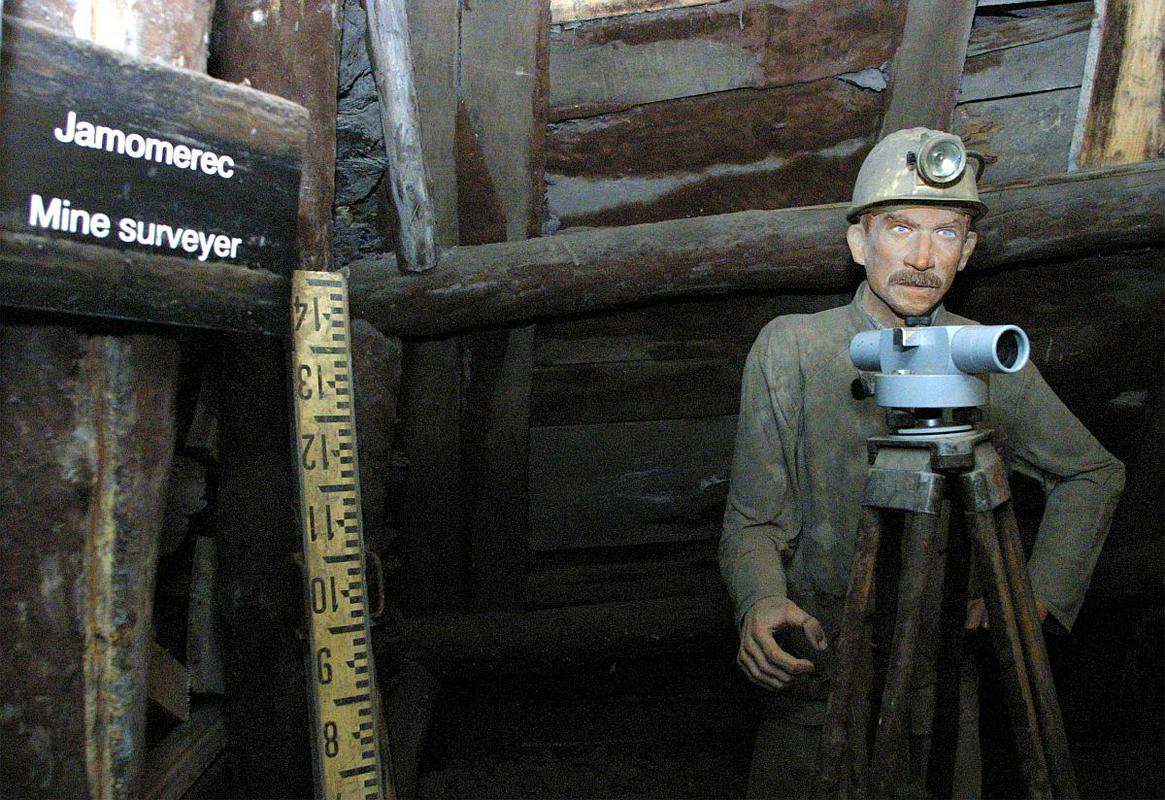
The government was deaf to Idrija's demands two years ago. This time Idrija's residents hoped they wouldn't have to repeat their strong arguments to the state - the owner of the mine. The mayor of Idrija, Bojan Sever, says the mercury mine should be shut down and that all the authority should be transferred to the Idrija Centre for the Management of the Heritage of Mercury, which was set up by the state in July 2012.
Every day around 2.000 cubic meters of groundwater are pumped out from the mine, from a depth of around 200 meters below the surface. Without that the water levels would rise daily by 10 to 15 centimeters. In three years they would reach the same level as the Idrijca River. The lower part of the mine, at a depth of more than 400 meters, is relatively solid and stable compared to the upper part.
"The bedrock is situated on carbonated slate, which is problematic because of its lower shear strength. If its ends are soaked in water, it would be like covering something with soap," describes Jakob Likar, a professor at the Department of Geotechnology and Mining at the Faculty of Natural Sciences and Technology. He has been taking part in the mine's closing activities since 1977, when the mine's main production shut down.
Without pumping out the water, the town would be under threat
More than three million cubic meters of ore have been dug out from the mine in a period of 500 years. Today, if the water pumping activities would stop, it could lead to landslides and the sliding of the neighbouring hills. It would threaten the very existence of the town. In the 19th century they had to tear down the first houses due to damage. A considerable sinking of the terrain was recorded in the 70s and 80s of the 20th century. A larger part of the mine is located directly under the town – the influential zone is much more than one square kilometer.
In the past there have already been ideas to move the whole town towards the village of Gore nad Idrijo. The idea was presented shortly after WWII, when a delegation of Russian experts paid a visit to Idrija. There are other such examples in the world, like for example the moving of the Swedish town of Kiruna. However professor Likar is of the opinion that moving the town is not possible because of its Unesco heritage status and tourism. "Multinational companies can maybe afford to move a whole town considering their large scale of business and profits. However Kiruna is a totally different story from Idrija, where mining operations are no longer taking place."
The second biggest mercury mine in the world once contributed five percent of the whole yearly budget of the Vienna palace. Today the mine represents a cost burden to Slovenia. Since 1996 the state has had to pay out around 6 million euros for mine damages. Apart from that it also sets aside yearly funds for the maintenance of the unfilled part of the mine. Experts still haven't found another way of saving the town with a population of 6.000, other than pumping out the groundwater from the mine.

































































